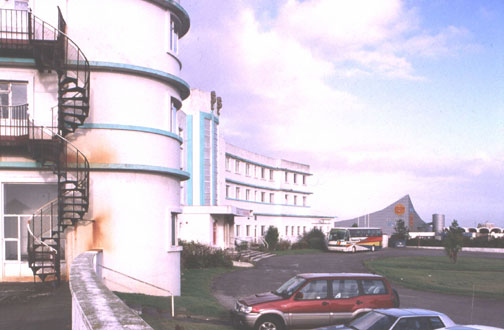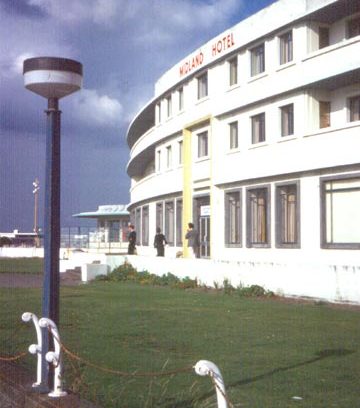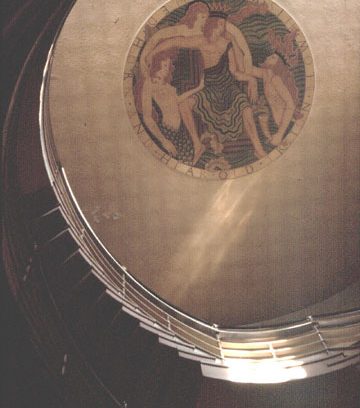This website uses cookies
This website uses cookies to enable it to function properly and to analyse how the website is used. Please click 'Close' to accept and continue using the website.





October 2001 - The Midland Hotel, Morecambe
The Midland Hotel at Morecambe in Lancashire has been central to the interests of the Twentieth Century Society since we were founded – as the Thirties Society – in 1979 for it is one of the most famous and stylish new buildings of the 1930s. Streamlined in form and aerodynamic in plan with its convex frontage overlooking Morecambe Bay, with its flat roof and rounded corners, it is at once Modern and modernistic (Art Deco?), informed by the Continental aesthetic of the Modern Movement and yet somehow flashy and slightly vulgar – as befits a seaside hotel. It was built in 1932-33 by the London Midland & Scottish Railway both to improve its own image and to revitalise a tired Victorian resort at a time of economic depression. As such, its modernity was a symbol of hope and when it opened it was given extravagant coverage with purple-tinted photographs in the glossy pages of the Architectural Review.
The Midland Hotel was the work of that versatile and stylish architect Oliver Hill, who could turn his hand to Classical, Tudor or Modern with equal accomplishment. But the interest of the building is not just the architecture for several remarkable contemporary works of art were commissioned for it. Most of these were by Eric Gill, who modelled two seahorses like Morecambe shrimps at the top of the central convex entrance bay and painted a circular plaster relief on the ceiling above the circular staircase within. Gill was also responsible for a decorative map wall illustrating the monuments and delights of Lancashire and a large stone relief of Odysseus Welcomed from the Sea by Nausica. There were also rugs by Marion Dorn and a mural by Eric Ravilious in the circular café with its tables of pink vitrolite, but this rapidly deteriorated.
The glamour of the Midland Hotel did not quite survive requisitioning during the Second World War although it remained an hotel until recently. Instead, it became a remarkable and evocative period piece and so – inevitably – was used for one of Brian Eastman’s clever Poirot television films – for which the Ravilious mural was recreated in the café. In 1979, the Gill stone relief had been dismantled for display in the ‘Thirties’ exhibition at the Hayward Gallery. Unfortunately, it was not replaced in its original position when it was returned. Even more unfortunately, it went missing in 1998 after being lent to the Gill Exhibition at the Barbican, though how six tons of stone could disappear without anyone noticing seemed curious. Eventually it was found, neatly packed, round about the time when the owner of the hotel, under investigation by the police, suddenly died.
The Midland – like Morecambe – is now very sad. Although it is listed at Grade II*, its doors are closed, its metal windows corroding, its external render peeling and cracking. But the building remains a landmark and is still loved, and last year the Friends of the Midland Hotel, Morecambe were founded to agitate for its restoration [see www.midlandhotel.org]. The latest news is that the derelict building has been bought by Kalber Leisure Ltd who intend restoring it “to its former glory”. This is most welcome, except that the current plans involve adding a new glazed storey containing a restaurant on the roof. So this remarkable and important building is likely to remain a worry to the Twentieth Century Society for a while yet.
Look for past Buildings of the Month by entering the name of an individual building or architect or browsing the drop down list.

Become a C20 member today and help save our modern design heritage.